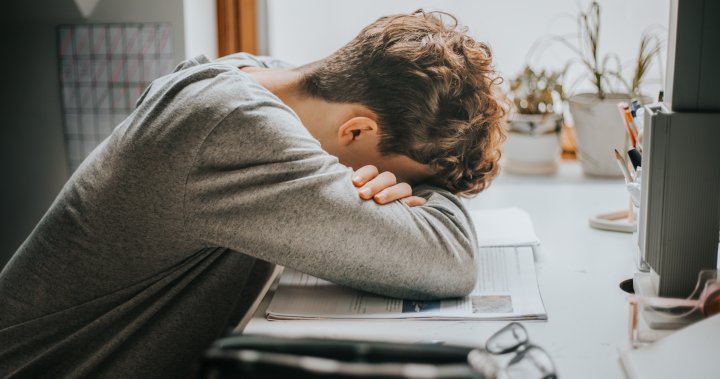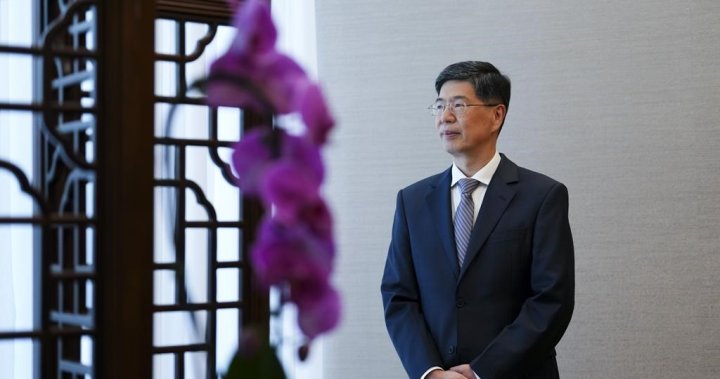As Blue Monday unfolds, many Canadians may find themselves grappling with the physical and mental challenges of this time of year, with colder weather and darker days. But there are ways to combat the seasonal blues, experts say.
While the third Monday of every January is often dubbed the most depressing day of the year, experts caution that there is no scientific study to support this claim. Yet, it might still be a good time to assess your mental well-being, especially with the holidays behind us and bills starting to arrive.
“Following the holidays can be a little bit of a downer,” explained Emiliana Simon-Thomas, science director at the University of California’s Berkeley’s Greater Good Science Center. “We have a lot in front of us, workwise, or dealing with a different weather pattern. And Monday also follows a weekend, so January Mondays can be particularly more ho-hum.”
In Canada, about 15 per cent of the population will have at least one mild episode of seasonal affective disorder (SAD) in their lifetime, while two to three per cent will report serious cases, according to the Canadian Psychological Association. SAD is often linked to the winter months, which can involve changes in energy, appetite and overall mood.
Dr. Stephanie Moynihan, a family physician based in Vancouver, said during this time of year she sees patients consulting more on mental health, trouble sleeping, increased joint pain and chronic illness.
“It’s a pattern we continuously see,” she said. “There’s this hibernation that ends up happening and people start slowing down, and there’s a drop in mood that tends to parallel the drop in weather, so people become more tired.”
Get the latest National news.
Sent to your email, every day.
In the face of the winter blues, Moynihan says intentionally altering your perspective can play a crucial role in effectively managing these seasonal challenges.
“The brain is trying to protect you. And so it’s going to always kind of tend to focus on the things that are negative. And so we have to train our brains also to focus on the things that are going well,” she said.
So how can this be done?
Simon-Thomas and her co-workers have been tracking the effects of “micro-acts of joy” — brief exercises or activities that can contribute to a person’s happiness.
Whether you’re compiling a gratitude list, extending a kind gesture like holding the door for a stranger, savouring a good book, or spending quality time with friends and family, Simon-Thomas suggests these small moments of joy can gradually build up through everyday actions.
“When we contribute to those experiences and allow them to strengthen those experiences that are joyful, we actually have the capacity and the agency over our own experience of joy and can improve upon it,” she said.
Simon-Thomas says her micro acts of joy include swimming in the ocean, taking in nature and parenting her three children.
These small actions, she says, serve as reminders of the positive aspects in individuals’ lives or prompt them to engage with people or nature.
“It’s the sense of belonging and connection that really matters,” she said.
Moynihan also believes it’s also about “going back to basics” when trying to combat the winter blues.
“Simple things like physical activity, which has been shown in studies as effective for mild to moderate depression as psychotherapy and medication. It doesn’t have to be very intense CrossFit-level physical activity. It’s just keeping your body moving,” she said.
She emphasized that sleep is another important component for mental and physical well-being, particularly for people grappling with episodes of depression.
“Sleep is an integral component of everything that we do. It’s how our bodies recuperate, it’s how we rest, it’s how we get better, and get our energy,” she explained. “Most studies have shown that we need at least seven hours of good sleep. So not just in terms of quantity but in terms of quality.”
If you’re having difficulty sleeping, she suggests turning off screen time an hour before bedtime and engaging in a more relaxing activity, such as reading a book or listening to music.
With the shorter days, Moynihan pointed out that the diminished sunlight could also be a factor contributing to a sense of depression.
“As the days shorten, reducing exposure to light, it’s important to recognize that light, beyond providing vitamin D from the sun, offers significant benefits to both our physical and mental well-being. Similar to exercise, exposing ourselves to light is considered a primary treatment for seasonal depression, helping to reintegrate this essential element into our daily lives,” she said.
To achieve this, she said you can either take a stroll on a sunny day or utilize a light therapy lamp. The lamp mimics natural sunlight exposure and plays a role in alleviating symptoms associated with SAD.
“Especially in the mornings, for example, when you wake up and it’s dark, exposing yourself to that in the morning will kind of help jumpstart your circadian rhythm, give you some energy for the day, and almost the same thing that we see with medication,” Moynihan said.
— with files from Global News’ Katherine Ward
© 2024 Global News, a division of Corus Entertainment Inc.




